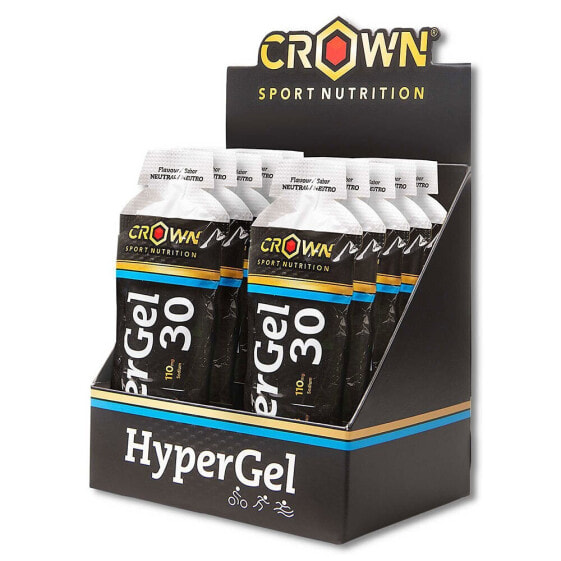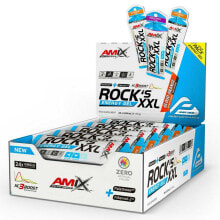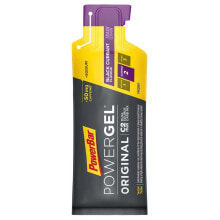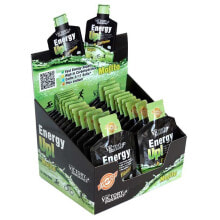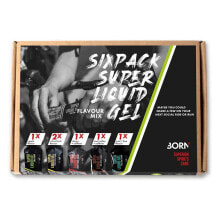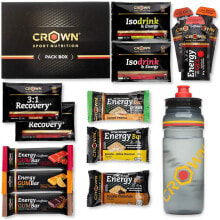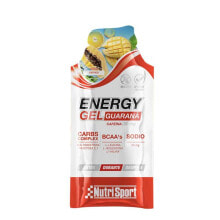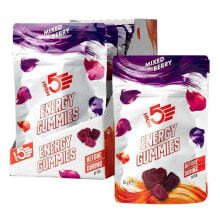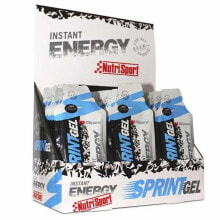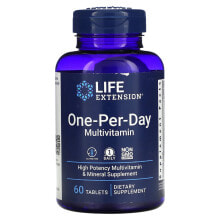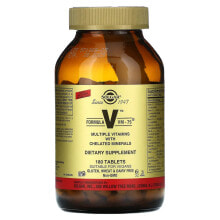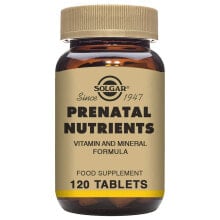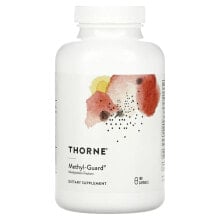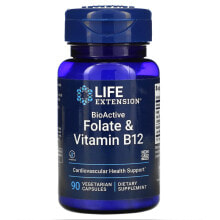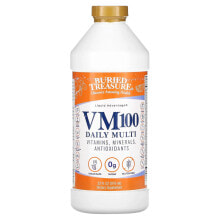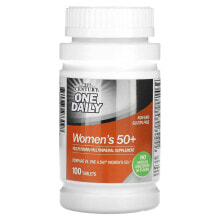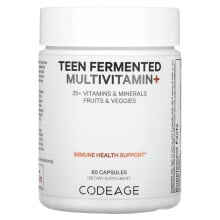CROWN SPORT NUTRITION Hyper 30 Hydro Neutral Energy Gels Box 75g 10 Units
Бестселлер
- Артикул:
- 109073338
13 706 AMD
Характеристики
Дизайн
- Цвет
- Белый
Прочие свойства
- EAN
- 8437022689623
- Бренд
- CROWN SPORT NUTRITION
Свойства
- Цвет
- Черный
Описание
Energy gel with 30 g of carbohydrates in a 1:0.8 maltodextrin:fructose ratio and extra sodium (110 mg) with neutral flavor.
Version without and with caffeine (80mg).
With very liquid texture (hydro) and without flavorings, sweeteners and colorings.
Indicated for high carbohydrate intake.
It contains only 6 ingredients in the caffeine-free version and 7 ingredients in the caffeinated version.
HYDRO TYPE ENERGY GEL WITH A PLUS OF CAFFEINE AND SODIUM.
Provides 30 g of carbohydrates and 80 mg of caffeine.
With Hydro type Liquid Texture.
Mixture of Maltodextrin and Fructose in a 1:0.8 ratio.
With a plus of Sodium (Sea salt) 110 mg.
Neutral flavor, with no added flavorings.
Maximum absorption and digestibility.
Suitable for Vegans and allergen free.
In.
Crown Sport Nutrition.
we have thought of all those athletes who need a higher carbohydrate intake during sports practice, that is why we have developed the.
Hyper line.
of products.
With them you can easily reach intakes of more than 60 g/hour of carbohydrates.
Within this line we have.
HyperGel 30 Hydro., an aqueous energy gel of the highest quality and with an ideal composition of carbohydrates and sodium, nutrients necessary to improve the performance of both training and competitions of long duration and / or high intensity.
In a single gel you will have 30 g of carbohydrates with more water, 80 mg of caffeine and an extra contribution of sodium (approx.
110 mg).
HyperGel 30 Hydro.
contains the ideal blend, according to science, of carbohydrates,.
Maltodextrin and Fructose., in a ratio of.
1.25:1.
(commonly known as.
1:0.8.
).
It has been shown that in prolonged exercise the use of carbohydrates that are absorbed in the intestine by different transporters (known as GLUT) is the only way to increase the rate of assimilation and oxidation of exogenous carbohydrates above 60 g/hour (Currell, K.
et al., MSSE.
2.008, Earnest, C.P.
et al., JSCR.
2004).
To this end, research has shown that the ideal is to combine a source that provides glucose (in our case maltodextrin) with another that provides fructose.
Why combine them in a 1.25:1 ratio (1:0.8) and not in the classic 2:1 or other ratio?.
Because the latest research has shown that with this ratio we achieve maximal oxidation of exogenous carbohydrates, that is, our body obtains maximal energy efficiency from the carbohydrates consumed (74% efficiency) (Rowlands, D.S.
et al., SM.
2.015).
Why use Maltodextrin as a source of glucose and not another one?.
Because, according to the scientific literature available today, it seems to be the best source when high efficiency in the use of exogenous glucose is sought, especially when high carbohydrate intake is required (> 60 g/h).
By using it, we achieve maximum oxidation of exogenous carbohydrates compared to other sources of glucose such as cyclodextrin (Cluster Dextrin®) or isomaltulose (Palatinose®).Cyclodextrin or highly branched cyclic dextrin (Cluster Dextrin®, as the most recognized patent) seems interesting at the osmotic level to avoid possible intestinal discomfort, but at the energy efficiency level, to date there is no scientific evidence to show that it is better.Isomaltulose (Palatinose®, as the most recognized patent), on the one hand, is a source of glucose and fructose, so it is not purely a source of glucose, but apart from that, studies have shown that its energy efficiency is lower compared to other carbohydrates (41% lower vs.
sucrose, for example) (Achten, J.
et al., JN.
2007), i.e., part of what is consumed is not used as a source of energy (always within the context of intake during sports practice), so it does not seem very logical to take a carbohydrate that part of it will not be used to provide energy, which is exactly what we are looking for when consuming this type of product.
Apart from its high energy efficiency, mentioned above, the use of maltodextrin as opposed to glucose as its own source of glucose, is also related to the fact that the use of this ingredient is more favorable at an osmotic level because it is a larger molecule, which reduces the osmolality of the mixture and this minimizes the possible gastrointestinal discomfort that can occur with high carbohydrate consumption during physical effort (Rowlands, D.S.
et al., SM.
2.022).The.
conclusion.
is that in terms of energy efficiency, both glucose and maltodextrin are similar, so we could use either of the 2, but in terms of osmotic level (to avoid gastrointestinal problems) it is more favorable to use maltodextrin.
In addition, for organoleptic themes, maltodextrin hardly adds any flavor, while glucose is sweeter, something we did not want in this case.
By way of summary and as a conclusion on the carbohydrates used., in the context of products with a high concentration of carbohydrates to be taken during exercise, the most important thing is that the energy efficiency of the exogenous carbohydrates consumed is maximum and minimize gastrointestinal problems as much as possible and, according to science, to date, this is only achieved by combining these 2 sources of carbohydrates (Maltodextrin / Fructose) and in the proportions of.
1.25:1.
(more commonly known as.
1:0.8.
).(Rowlands, D.S.
et al., SM.
2.022).
Only in the caffeinated variant:
we have added caffeine, the most effective ingredient for the direct improvement of performance, both endurance and strength (Grgic, J.
et al., BJSM.
2.019).
In addition to activating the Central Nervous System (CNS), it delays fatigue and optimizes the use of cellular fuels (glycogen and fat).
But the most important thing is that it improves muscular contraction (Lopes, J.M.
et al., JAP.
1983), hence its efficacy especially when fatigue begins.
To complete the formula we have added.
Sodium (Na)., sodium chloride in the form of.
Marine salt., as a contribution of the mineral.
Sodium (Na).
Sodium is the most important electrolyte during sports practice, because it is the one we lose the most with sweat and it is essential to maintain hydration during physical activity (NDA Panel.
EFSA Journal.
2011).
Hydro type liquid texture!.
Some people have trouble swallowing gels, even if they have a fluid texture, so we have developed this.
Hydro.
type gel, i.e.
with extra water, for all those who find it difficult to swallow gels during a race.
We have succeeded in making a.
gel with a liquid texture.
that will not be difficult to swallow, in fact, you will think you are taking a ´´shot´´ of sports drink instead of taking a gel.
Neutral flavor! No flavorings, no sweeteners, no colorings.To minimize the gastrointestinal problems that may occur, we have developed a product of high purity, so it has no flavor, only at the organoleptic level has a slight sweet touch that brings the fructose itself, nothing more.
It does not contain flavorings, sweeteners or colorings.
Version without and with caffeine (80mg).
With very liquid texture (hydro) and without flavorings, sweeteners and colorings.
Indicated for high carbohydrate intake.
It contains only 6 ingredients in the caffeine-free version and 7 ingredients in the caffeinated version.
HYDRO TYPE ENERGY GEL WITH A PLUS OF CAFFEINE AND SODIUM.
Provides 30 g of carbohydrates and 80 mg of caffeine.
With Hydro type Liquid Texture.
Mixture of Maltodextrin and Fructose in a 1:0.8 ratio.
With a plus of Sodium (Sea salt) 110 mg.
Neutral flavor, with no added flavorings.
Maximum absorption and digestibility.
Suitable for Vegans and allergen free.
In.
Crown Sport Nutrition.
we have thought of all those athletes who need a higher carbohydrate intake during sports practice, that is why we have developed the.
Hyper line.
of products.
With them you can easily reach intakes of more than 60 g/hour of carbohydrates.
Within this line we have.
HyperGel 30 Hydro., an aqueous energy gel of the highest quality and with an ideal composition of carbohydrates and sodium, nutrients necessary to improve the performance of both training and competitions of long duration and / or high intensity.
In a single gel you will have 30 g of carbohydrates with more water, 80 mg of caffeine and an extra contribution of sodium (approx.
110 mg).
HyperGel 30 Hydro.
contains the ideal blend, according to science, of carbohydrates,.
Maltodextrin and Fructose., in a ratio of.
1.25:1.
(commonly known as.
1:0.8.
).
It has been shown that in prolonged exercise the use of carbohydrates that are absorbed in the intestine by different transporters (known as GLUT) is the only way to increase the rate of assimilation and oxidation of exogenous carbohydrates above 60 g/hour (Currell, K.
et al., MSSE.
2.008, Earnest, C.P.
et al., JSCR.
2004).
To this end, research has shown that the ideal is to combine a source that provides glucose (in our case maltodextrin) with another that provides fructose.
Why combine them in a 1.25:1 ratio (1:0.8) and not in the classic 2:1 or other ratio?.
Because the latest research has shown that with this ratio we achieve maximal oxidation of exogenous carbohydrates, that is, our body obtains maximal energy efficiency from the carbohydrates consumed (74% efficiency) (Rowlands, D.S.
et al., SM.
2.015).
Why use Maltodextrin as a source of glucose and not another one?.
Because, according to the scientific literature available today, it seems to be the best source when high efficiency in the use of exogenous glucose is sought, especially when high carbohydrate intake is required (> 60 g/h).
By using it, we achieve maximum oxidation of exogenous carbohydrates compared to other sources of glucose such as cyclodextrin (Cluster Dextrin®) or isomaltulose (Palatinose®).Cyclodextrin or highly branched cyclic dextrin (Cluster Dextrin®, as the most recognized patent) seems interesting at the osmotic level to avoid possible intestinal discomfort, but at the energy efficiency level, to date there is no scientific evidence to show that it is better.Isomaltulose (Palatinose®, as the most recognized patent), on the one hand, is a source of glucose and fructose, so it is not purely a source of glucose, but apart from that, studies have shown that its energy efficiency is lower compared to other carbohydrates (41% lower vs.
sucrose, for example) (Achten, J.
et al., JN.
2007), i.e., part of what is consumed is not used as a source of energy (always within the context of intake during sports practice), so it does not seem very logical to take a carbohydrate that part of it will not be used to provide energy, which is exactly what we are looking for when consuming this type of product.
Apart from its high energy efficiency, mentioned above, the use of maltodextrin as opposed to glucose as its own source of glucose, is also related to the fact that the use of this ingredient is more favorable at an osmotic level because it is a larger molecule, which reduces the osmolality of the mixture and this minimizes the possible gastrointestinal discomfort that can occur with high carbohydrate consumption during physical effort (Rowlands, D.S.
et al., SM.
2.022).The.
conclusion.
is that in terms of energy efficiency, both glucose and maltodextrin are similar, so we could use either of the 2, but in terms of osmotic level (to avoid gastrointestinal problems) it is more favorable to use maltodextrin.
In addition, for organoleptic themes, maltodextrin hardly adds any flavor, while glucose is sweeter, something we did not want in this case.
By way of summary and as a conclusion on the carbohydrates used., in the context of products with a high concentration of carbohydrates to be taken during exercise, the most important thing is that the energy efficiency of the exogenous carbohydrates consumed is maximum and minimize gastrointestinal problems as much as possible and, according to science, to date, this is only achieved by combining these 2 sources of carbohydrates (Maltodextrin / Fructose) and in the proportions of.
1.25:1.
(more commonly known as.
1:0.8.
).(Rowlands, D.S.
et al., SM.
2.022).
Only in the caffeinated variant:
we have added caffeine, the most effective ingredient for the direct improvement of performance, both endurance and strength (Grgic, J.
et al., BJSM.
2.019).
In addition to activating the Central Nervous System (CNS), it delays fatigue and optimizes the use of cellular fuels (glycogen and fat).
But the most important thing is that it improves muscular contraction (Lopes, J.M.
et al., JAP.
1983), hence its efficacy especially when fatigue begins.
To complete the formula we have added.
Sodium (Na)., sodium chloride in the form of.
Marine salt., as a contribution of the mineral.
Sodium (Na).
Sodium is the most important electrolyte during sports practice, because it is the one we lose the most with sweat and it is essential to maintain hydration during physical activity (NDA Panel.
EFSA Journal.
2011).
Hydro type liquid texture!.
Some people have trouble swallowing gels, even if they have a fluid texture, so we have developed this.
Hydro.
type gel, i.e.
with extra water, for all those who find it difficult to swallow gels during a race.
We have succeeded in making a.
gel with a liquid texture.
that will not be difficult to swallow, in fact, you will think you are taking a ´´shot´´ of sports drink instead of taking a gel.
Neutral flavor! No flavorings, no sweeteners, no colorings.To minimize the gastrointestinal problems that may occur, we have developed a product of high purity, so it has no flavor, only at the organoleptic level has a slight sweet touch that brings the fructose itself, nothing more.
It does not contain flavorings, sweeteners or colorings.
